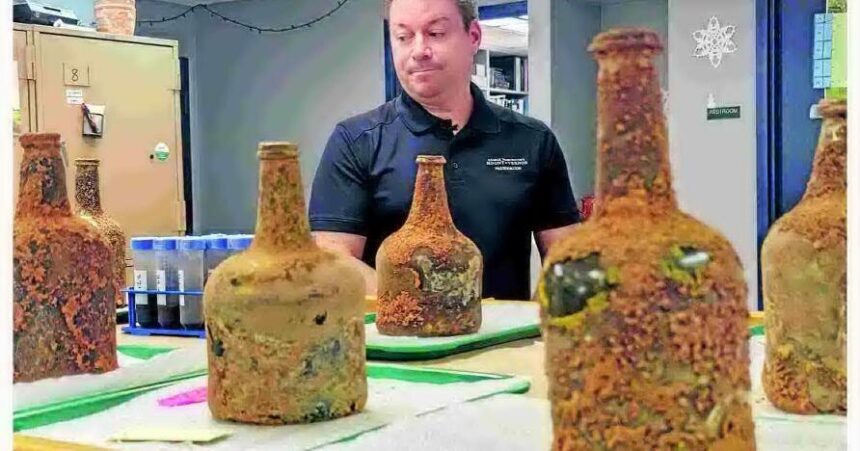MOUNT VERNON, Va. — George Washington never did cut down the cherry tree, despite the famous story to the contrary, but he did pack away quite a few bottles of the fruit at his Mount Vernon home.
Dozens of bottles of cherries and berries — impossibly preserved in storage pits uncovered from the cellar of his mansion on the banks of the Potomac River — were discovered during an archaeological dig connected to a restoration project.
Jason Boroughs, Mount Vernon’s principal archaeologist, said the discovery of so much perfectly preserved food from more than 250 years ago is essentially unprecedented.
“Finding what is essentially fresh fruit, 250 years later, is pretty spectacular,” Boroughs said in an interview. “All the stars sort of have to align in the right manner for that to happen.”
Whole pieces of fruit, recognizable as cherries, were found in some of the bottles. Other bottles held what appear to be gooseberries or currants, though testing is underway to confirm that.
People are also reading…
Mount Vernon is partnering with the U.S. Department of Agriculture, which is conducting DNA testing on the fruit. They are also examining more than 50 cherry pits recovered from the bottles to see if they can be planted.
“It’s kind of a longshot,” said Benjamin Gutierrez, a USDA plant geneticist, of the chances of using a cherry pit to grow a tree. Seeds preserve best when they are dry, and most of the samples found at Mount Vernon were waterlogged. A couple of pits tested initially were not viable as seeds.
Still, he said the bottles are a remarkable find. In addition to DNA testing, he said chemical testing may be able to show if particular spices were used to preserve the fruits.
Records at Mount Vernon show that George and Martha Washington were fond of cherries, at least when mixed with brandy. Martha Washington’s recipe for a “cherry bounce” cocktail survives, and Washington wrote that he took a canteen of cherry bounce with him on a trip across the Alleghenies in 1784.
These cherries, though, were most likely bottled to be eaten simply as cherries, Boroughs said.
The quality of the preservation reflects a high caliber of work. Slaves ran the plantation’s kitchen. The kitchen was overseen by an enslaved woman named Doll, who came to Mount Vernon in 1758 with Martha Washington, according to the estate.
The bottles were found only because Mount Vernon is doing a $40 million revitalization project of the mansion that they expect to be completed by the nation’s 250th birthday in 2026.
“When we do archaeology, it’s destructive,” Boroughs said. “So unless we have a reason to disturb those resources, we tend not to.”





